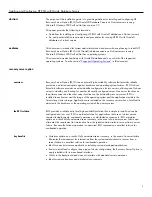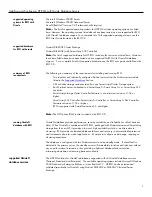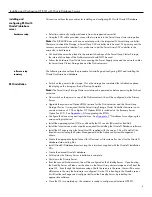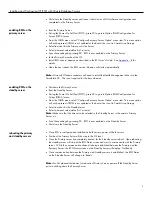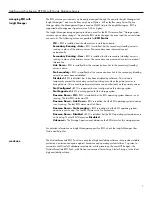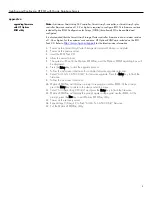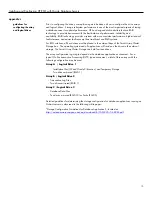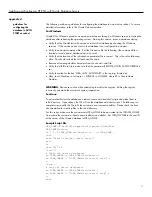
Installing and Configuring HP RSO with Oracle Database Servers
11
appendix d
guidelines for
configuring the
database to AUTO-
START on reboot
The following are basic guidelines for configuring the database to auto-start on reboot. For more
detailed information, refer to the Oracle9
i
documentation.
For Windows
Oracle9
i
for Windows provides an auto-start mechanism through a Windows service to startup the
database after rebooting the operating system. Starting this service, issues a database startup.
•
Verify that the OracleStart<sid> service exists for this database by checking the Windows
services. If this service does not exist, the database is not configured to autostart.
•
Verify the autostart command file. Edit the file and verify the following: (the command file is
located at oracle_home\database\strt<sid>.cmd)
•
Verify that the location of the initialization parameter file is correct. This is the value following -
pfile. This should include the full path and file name.
•
Remove all unrecognizable characters from the strt<sid>.cmd file.
•
Verify the initSID.ora file to make sure that the parameter REMOTE_LOGIN_PASSWORDFILE is
set.
•
Verify the value for the key 'ORA_<SID>_AUTOSTART' in the registry, located at:
•
Hkey_Local_Machine => software => ORACLE => HOMEXX where XX is Oracle Home
Number
WARNING
: Please use caution when attempting to modify the registry. Editing the registry
incorrectly can make the customer’s system inoperative.
For Linux
To automatically start the database on reboot, create auto-start shell scripts and place them in
init.d directory. Upon reboot, the OS will run the database auto-start scripts. The following is a
sample script; modify this file to fit the customer’s environment variables. Please check the Linux
documentation for creating files in the init.d directory.
For this script, make sure the customer sets ORA_HOME to be equivalent to the ORACLE_HOME
from where the customer wishes to execute dbstart and dbshut. Set ORA_OWNER to the user ID
of the owner of the Oracle database in ORA_HOME.
Sample Script File
ORA_HOME=/YourFileSys/apps/oracle/product/Ora90Home
ORA_OWNER=oracle
if [ ! -f $ORA_HOME/bin/dbstart -o ! -d $ORA_HOME ]
then
echo "Oracle startup: cannot start:"
exit
fi
case "$1" in
'start')
# Start the Oracle databases:
su $ORA_OWNER -c $ORA_HOME/bin/dbstart &
su $ORA_OWNER -c "$ORA_HOME/bin/lsnrctl start" &
;;
'stop')
# Stop the Oracle databases:
su $ORA_OWNER -c $ORA_HOME/bin/dbshut &
su $ORA_OWNER -c "$ORA_HOME/bin/lsnrctl stop" &
;;
esac


